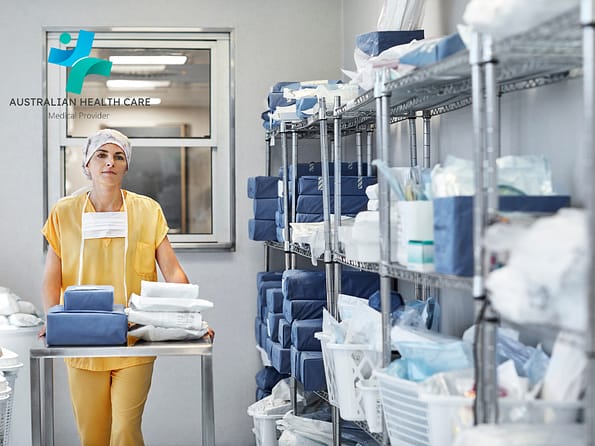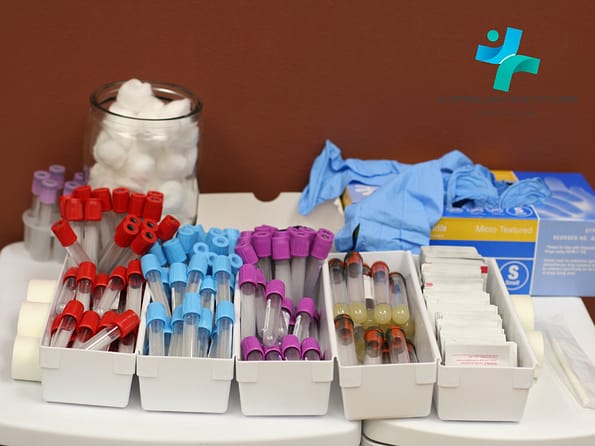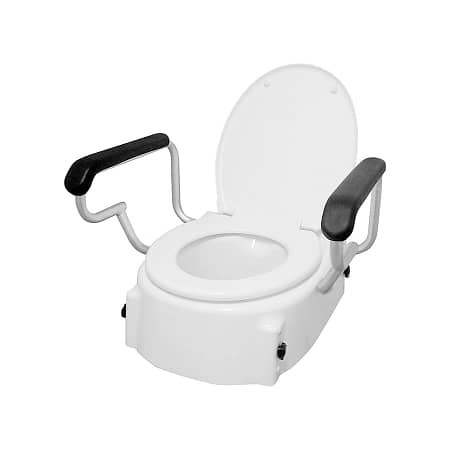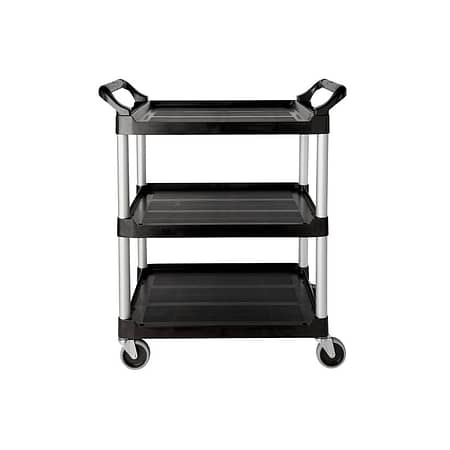The provision of home care in Australia has grown significantly, driven by the population’s aging demographic and the increasing preference for receiving care in the comfort of one’s home. Essential to this care model is the use of quality medical equipment, which ensures safety, comfort, and the highest standard of care for patients.
Importance of Quality Medical Equipment in Home Care
Quality medical equipment in home care settings is not just a matter of convenience; it is a cornerstone of effective care delivery. High-quality equipment ensures that care recipients can manage their conditions safely at home, reducing the need for hospital readmissions and enhancing their quality of life. From mobility aids to medical chair cushions, the right equipment supports various health needs, ensuring care recipients remain comfortable and supported.
Overview of Home Care Needs in Australia
Australian health care are diverse, encompassing everything from post-operative recovery and chronic disease management to elderly care and palliative support. As such, the demand for a wide range of medical equipment that can cater to these varied needs is crucial. The goal is to equip homes with the necessary tools to create an environment that fosters healing, comfort, and independence.
Identifying Home Care Medical Equipment Needs

Proper assessment and understanding of a patient’s specific health care needs are pivotal in selecting the right medical equipment for home use. This ensures that the care provided is personalized and effective.
Assessing the Patient’s Requirements
Assessment involves a comprehensive review of the patient’s medical history, current condition, and daily living activities. Healthcare professionals, in collaboration with patients and their families, identify the challenges and requirements that the medical equipment needs to address. This could range from mobility issues and pain management to support with daily living activities.
Essential Medical Supplies for Effective Home Care
Essential medical supplies for home care might include, but are not limited to, mobility aids like walkers and wheelchairs, hygiene products, wound care supplies, and specialized bedding or cushions to prevent pressure sores. Each piece of equipment plays a vital role in facilitating home care and enhancing the patient’s quality of life.
Selecting Medical Chair Cushions for Home Use

Medical chair cushions are a critical component of home care medical supplies, especially for individuals who spend significant amounts of time seated or who are at risk of pressure sores.
Features to Look for in Medical Chair Cushions
When selecting a medical chair cushion, consider features like material quality, which affects comfort and durability; design, which can provide targeted support; and ease of cleaning, which is essential for hygiene. Additionally, consider whether the cushion offers pressure relief and if it’s adjustable to cater to the individual’s specific needs.
Benefits of Using Ergonomic Chair Cushions in Home Care
Ergonomic chair cushions support proper posture, enhance comfort, and significantly reduce the risk of pressure sores and skin breakdown. They can also aid in pain management and improve the overall well-being of individuals requiring long-term seated support. Ultimately, ergonomic chair cushions are indispensable in creating a therapeutic home environment conducive to recovery and comfort.
Comprehensive Guide to Other Vital Medical Supplies for Home Care

Ensuring a supportive home care environment requires a range of medical supplies beyond chair cushions. These supplies are critical for promoting mobility, independence, and overall well-being.
Mobility Aids: Types and Selection Criteria
Types of Mobility Aids:
- Walkers and rollators provide stability for those who can walk but need support.
- Wheelchairs and electric scooters are for individuals with limited mobility.
- Transfer aids, such as patient lifts and transfer boards, help in safely moving patients.
Selection Criteria:
- Consider the user’s mobility level, physical strength, and where the aid will be used (indoors, outdoors, or both).
- Adjustability and ease of use are important for accommodating the user’s specific needs.
- Durability and safety features, like brakes on wheelchairs, are essential.
Daily Living Aids: Enhancing Quality of Life at Home
Types of Daily Living Aids:
- Reachers and grabbers assist those with limited mobility to pick up objects.
- Adaptive utensils and dressing aids support independence in eating and self-care.
- Bedrails and overbed tables enhance comfort and functionality for bed-bound patients.
Enhancing Quality of Life:
- These aids reduce the need for constant caregiver assistance, fostering independence.
- They can significantly improve the mental well-being of home care patients by allowing them to perform tasks themselves.
Hygiene and Care Products: Maintaining Health and Comfort
Essential Products:
- Incontinence supplies, including adult diapers and bed pads, are vital for maintaining hygiene and dignity.
- Skin care products specially formulated for sensitive or compromised skin prevent breakdown and promote healing.
- Bathing aids, such as shower chairs and no-rinse cleansers, ensure safety and hygiene for those with limited mobility.
Procurement Strategies for Home Care Medical Supplies

Accessing the right medical supplies is crucial for effective home care. Knowing where and how to purchase these supplies can make a significant difference in care quality and cost-efficiency.
Where to Purchase Quality Medical Supplies in Australia
- Specialized medical supply stores and pharmacies offer a wide range of products with knowledgeable staff to assist in selection.
- Online retailers provide convenience and often wider selections at competitive prices. Ensure they are reputable and offer Australian standards-compliant products.
Tips for Cost-Effective Procurement of Medical Equipment
- Compare prices and options from multiple suppliers to find the best deals.
- Consider generic options for consumable supplies like incontinence products, which can be less expensive but still high quality.
- Look for suppliers that offer discounts for bulk purchases or have loyalty programs.
Government and Insurance Support for Home Care Supplies

Understanding the financial support options available for home care medical supplies can alleviate the cost burden on families and caregivers.
Understanding Medicare and Other Insurance Coverage
- Medicare provides coverage for certain medical supplies, but eligibility and coverage details can vary. It’s crucial to review the specific Medicare benefits schedule or consult with a healthcare provider.
- Private health insurance may offer additional coverage for medical supplies not covered by Medicare. Check the specifics of your policy.
Accessing Government Subsidies and Programs for Home Care Equipment
- The Australian Government provides various subsidies and programs to support individuals requiring home care, including the Home Care Packages Program and the National Disability Insurance Scheme (NDIS).
- These programs may cover part or all of the cost of necessary medical supplies and equipment, depending on eligibility criteria.
Maintenance and Care of Home Care Medical Supplies

Proper maintenance and timely updates of home care medical supplies are crucial for ensuring the safety, comfort, and well-being of those receiving care at home. These practices not only extend the life of the equipment but also ensure they function efficiently when needed.
Regular Maintenance Tips for Longevity and Efficiency
- Cleanliness: Regular cleaning according to the manufacturer’s instructions is essential for hygiene and to prevent equipment malfunction. Use appropriate disinfectants for medical equipment to avoid damage.
- Inspection: Routine checks for wear and tear, such as fraying wires, loose parts, or signs of rust, can help identify issues before they lead to equipment failure.
- Storage: Store equipment in suitable conditions, avoiding extreme temperatures and humidity, to prevent premature deterioration.
When to Replace or Upgrade Home Care Medical Equipment
- Technological Advancements: Upgrading to newer models can provide better care through improved functionality and ease of use.
- Wear and Tear: Equipment showing significant signs of wear should be replaced to maintain safety and effectiveness.
- Changes in Care Needs: As the patient’s condition changes, their equipment needs might also change, necessitating replacements or upgrades.
Conclusion
The Role of Medical Equipment in Enhancing Home Care
Medical equipment plays a pivotal role in home care, enabling individuals to live more comfortably and independently. From mobility aids that assist in daily activities to medical chair cushions that prevent pressure sores, the right equipment can significantly impact the quality of home care provided.
Encouraging a Proactive Approach to Selecting and Managing Home Care Supplies
Adopting a proactive approach in selecting and managing home care medical supplies ensures that individuals receive the best possible care tailored to their specific needs. This approach involves:
- Staying informed about the latest in medical equipment and care strategies.
- Regularly assessing and updating care plans and equipment as needed.
- Engaging with healthcare professionals for advice on equipment selection and care strategies.





















